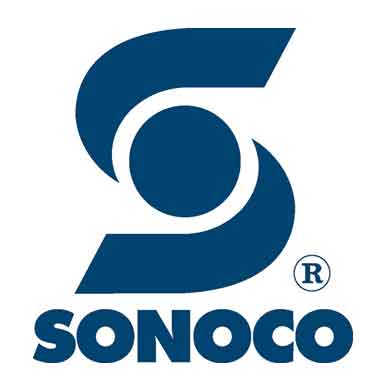
Sonoco's plastic packaging and composite cans are versatile all-rounders that can be adapted to individual products and their uses.
Spread out your picnic blanket, apply your sunscreen, and you're all set! Preparing for a picnic is as easy as it gets. For her meal in the park, Kira Brown is looking for food that is just as easy to take along and eat. At the supermarket, she picks out yoghurt, sandwich spreads and miniature mozzarella balls – all in plastic packaging made by Sonoco Europe (NYSE:SON). The packaging is manufactured in the In-Mould labeling process (IML), offers the same protection as cans, and is easy to open. Thanks to the different product sizes, Kira can limit her purchases to the amount of food she actually needs. And if there are any leftovers, the resealable lids make it easy for her to take them home.
The right packaging for every occasion
Before the practical plastic packaging reaches Kira's picnic blanket, it undergoes an extensive development process at Sonoco. With its clients, the packaging manufacturer runs through simulations of where, when, how and by whom the product will be used. Through these simulations of purchase and consumption situations, Sonoco puts its packaging to the test. For instance, in the company's own iPS Studio (Innovative Packaging Solutions Studio), test subjects examine how easy it is to open and close different types of lids, or which snack packaging is best for munching on the couch in the evenings.
In addition to the US-based iPS Studio in Hartsville, South Carolina, Sonoco will open a second testing environment at its European headquarters in Hockenheim, Germany, in 2017. It's the ideal place for the company to work with its customers on developing the right design and optimizing the materials, shapes, linings, lids and ends for their packaging. The customer ultimately receives a packaging solution that lives up to the brand image while meeting consumer needs.
For cozy evenings at home
Packaging also plays a big role in Paul Müller's purchase decision. He usually enjoys snacking on a few stackable chips after lunch. The snack-sized rigid paperboard container is easy and safe to transport in his briefcase. For the European Football Championship, he's invited over some friends to watch a game. His favorite chips have to be there, too; and today's his lucky day, since the full-sized container is currently being sold with 20 percent more chips – a special offer connected with the European Championship. Paul goes for the deal and there's plenty for everyone. But just to be safe, he adds an extra snack to his cart: paprika rings, also packaged in a composite can.
The sturdy packaging stands firmly on Paul's coffee table throughout the match – with no need to transfer the snacks into serving bowls. It's almost kickoff time, and the round containers are conveniently in place for everyone to serve themselves as they wish. And what about the leftovers? Even after the membrane has been removed upon opening the container, the tightly fitting snap lid is designed to protect the contents – particularly moisture-sensitive products like snacks. Aluminum linings and tin bases serve as an additional shield, keeping the snacks crisp. So Paul can still enjoy what's left a few days later.
Making an impression on the supermarket shelf
Like most consumers, Kira Brown and Paul Müller make their food choices in the supermarket at the spur of the moment. Large-scale illustrations whet their appetites, while unique packaging formats vie for their attention. In the case of plastic packaging, consumer goods manufacturers are able to design the shape quite freely. The shapes may imitate traditional paper and metal packaging or use a completely novel design to embrace their brand identity. Sonoco's rigid paperboard containers also attract consumers’ attention, such as Kira and Paul, thanks to high-quality printed images and effects. Modified package sizes or special designs that are quick to implement are constantly offering new aspects that appeal to consumers. Designing packaging is all about planning ahead; and smart manufacturers start thinking of recycling very early on.
Where planning pays off
Kira and Paul have no need to worry: IML plastic packaging and its labels are composed of the same material and can be disposed of together. Composite cans consist largely of processed recycled paper. Lids and bases are processed separately and the source material can be reused or is even biodegradable.
A packaging that is convenient and fits every situation, an eyecatcher on supermarket shelves and sustainable at the same time: It is no surprise that consumers come back to products that are marketed in Sonoco packaging. According to a survey conducted by Sonoco, 95 per cent of all consumers would purchase a product in a composite can again. Plastic packaging can contribute to consumers’ loyalty through a high level of convenience as well. Kira and Paul will very likely opt again for goods in the kind of packaging that fits their lifestyle perfectly.







